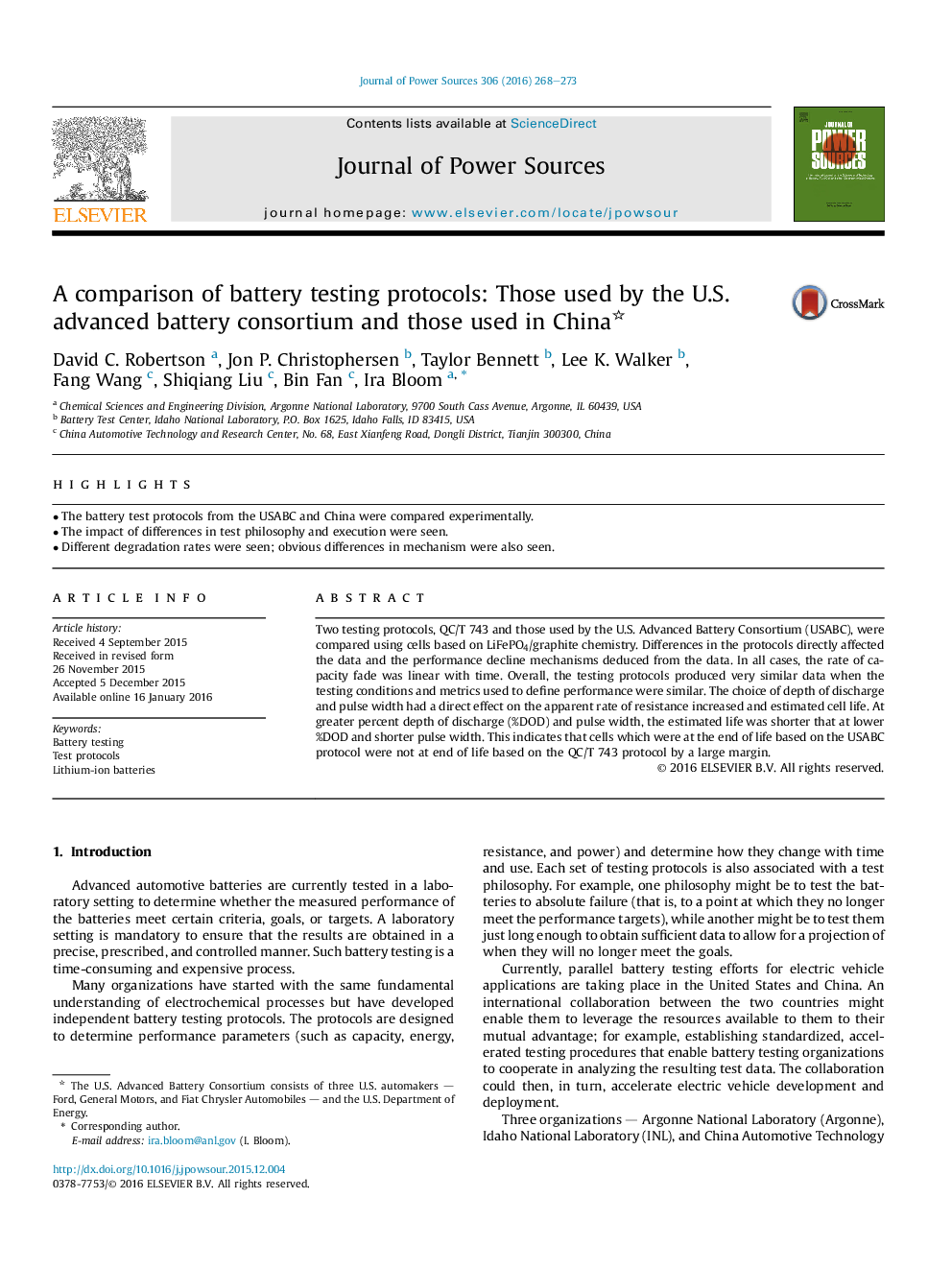| Article ID | Journal | Published Year | Pages | File Type |
|---|---|---|---|---|
| 1292401 | Journal of Power Sources | 2016 | 6 Pages |
•The battery test protocols from the USABC and China were compared experimentally.•The impact of differences in test philosophy and execution were seen.•Different degradation rates were seen; obvious differences in mechanism were also seen.
Two testing protocols, QC/T 743 and those used by the U.S. Advanced Battery Consortium (USABC), were compared using cells based on LiFePO4/graphite chemistry. Differences in the protocols directly affected the data and the performance decline mechanisms deduced from the data. In all cases, the rate of capacity fade was linear with time. Overall, the testing protocols produced very similar data when the testing conditions and metrics used to define performance were similar. The choice of depth of discharge and pulse width had a direct effect on the apparent rate of resistance increased and estimated cell life. At greater percent depth of discharge (%DOD) and pulse width, the estimated life was shorter that at lower %DOD and shorter pulse width. This indicates that cells which were at the end of life based on the USABC protocol were not at end of life based on the QC/T 743 protocol by a large margin.
